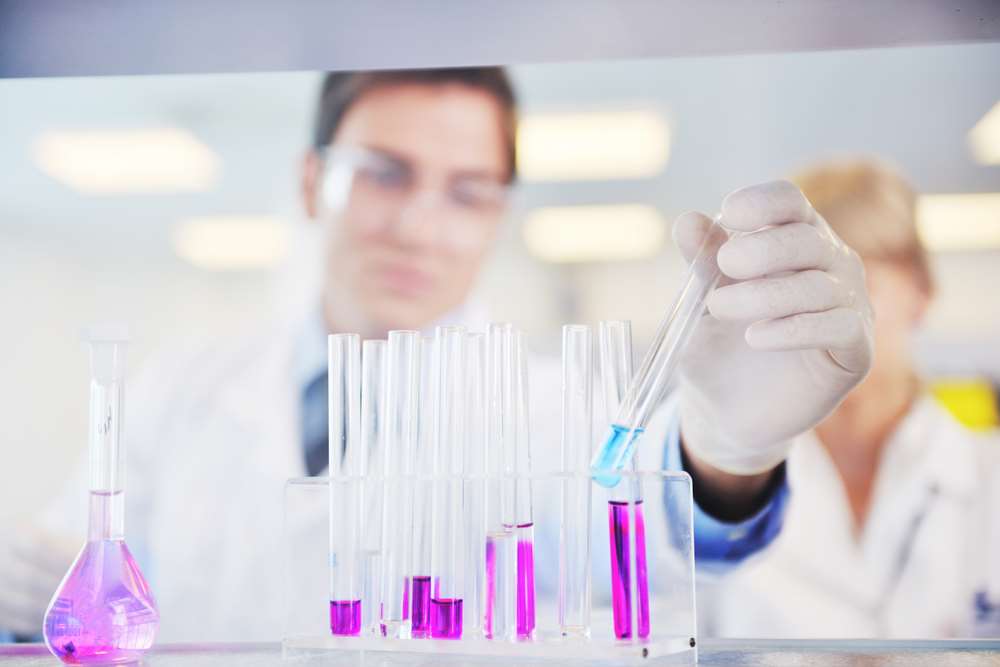How To
How To Calculate Percent Yield

After a Chemical reaction, the product gained is called Yield (Which is referred to as Reaction Yield). However, while making a chemical response theoretically (also known as the stoichiometric calculation), the gained product is known as the Theoretical Yield. And the product obtained from the actual experiment is known as Actual Yield. The actual yield is mostly less than the theoretical yield.
The Percent Yield is measured to calculate the efficiency of a chemical reaction. The 90% of Percent Yield refers to a 90% efficient reaction with 10% wastage. The wastage mostly occurs when some elements didn’t work correctly or failed to react.
The formula to calculate the Percent Yield is:
%Yield=(Actual Yield/Theoretical Yield)
Explanation Of Percent Yield:
To calculate Percent Yield, first, we have to find the values of Actual Yield and Theoretical Yield.
Theoretical Yield
In a chemical reaction, there is no loss of mass or energy. So the equation which identifies the response should be balanced on the molecular level. The right side of a chemical reaction identifies the product gained from the answer.
The theoretical yield means the product gained from an efficient reaction. To get the actual value, let’s start with the limiting reactant.
The Limiting Reactant
Start by writing the chemical equation of the reaction. Some problems have already given the result. In that case, you have to check the little balance of the equation. As there is no change of mass and energy in a reaction, the two sides of the chemical equation should contain the same no. of molecules.
The elements on the left side of an equation are called Reactants as they take part in the chemical reaction. Check the molar mass of each atom from the reactant group. Multiply each molar mass with the no. of molecules present in that group.
For example,
Let’s say that the group contains O2. Now the Molar mass of O (Oxygen) is about 16g/mol. So the Total molar mass of O2 = 16×2= 32g/mol
Find the molecular mass of each atom in an above-said way and add them to find out the total molecular mass of the reactant.
Going further, now write the amount of each atom taken for the reaction in gram and divide them with their molar mass to transfer them to the mole. By sharing the moles of one reactant with other, you’ll get a ratio which will be the same as the product side.
As you see, in a chemical reaction, one reactant gets used up before the others. So the quantity of the product we gained from the response is limited by the reagent. So by comparing the ratios, we can find the limiting reactant.
Now, returning to the balanced equation, start dividing the molecule number of your desired product by the limiting reactant molecule number. The answer will be the theoretical yield of the desired product in moles. By multiplying the solution with the molecular mass of the compound, we can get the mass of the return in gram.
Calculating Percent Yield
Write the actual yield of the experiment. If you’re experimenting by yourself, write down the actual mass of the product gained from the reaction. If you’re solving a problem given to you, the actual ceremony will be provided for the use.
After that, divide the actual yield by the theoretical yield. But remember to keep both in the same unit (typically grams for better calculation). The result will be a unit-less ratio. Now multiply it with 100 to get the Percent Yield.
In this section, we’ve learnt to determine the Percent Yield from a Chemical reaction. I hope that you’ve found your right answer.

-
Business4 days ago
Mike Bahun and Fundraising University Make a Lasting Impact on Sports Programs Nationwide
-
Top Stories4 days ago
After VW plant victory, UAW sets its sights on Mercedes in Alabama
-
Investing4 days ago
Forex Market Trends to Watch Out For in 2024
-
Top Stories4 days ago
Hedge fund borrowing hits five-year peak, Goldman Sachs says







